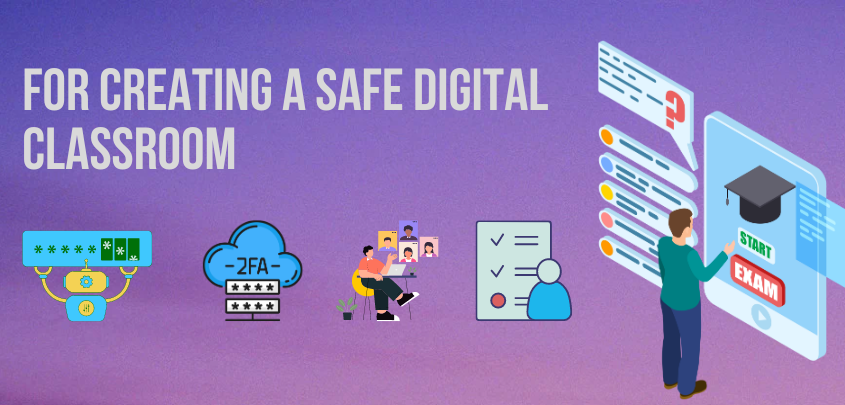
05, Aug, 2024
Top 5 Habits for Creating a Safe Digital Classroom
Ensuring a safe digital classroom environment is essential for effective online learning. Here are five key habits that educators can adopt to maintain security and foster a positive learning experience.
1. Enforce Strong Password Policies
- Habit: Require the use of complex, unique passwords for all accounts and update them regularly.
- Why: Strong passwords prevent unauthorized access and protect sensitive data.
2. Utilize Two-Factor Authentication (2FA)
- Habit: Activate 2FA for added security on all platforms and accounts.
- Why: 2FA provides an additional layer of protection beyond just passwords, reducing the risk of breaches.
3. Control Meeting Access
- Habit: Use features like waiting rooms and pre-approve participants before allowing them into virtual classrooms.
- Why: Managing access prevents unauthorized individuals from disrupting sessions and ensures a secure environment.
4. Limit Permissions
- Habit: Restrict screen sharing and file sharing capabilities to the host or teacher by default.
- Why: Limiting permissions reduces the risk of inappropriate content being shared and maintains classroom control.
5. Promote Cyber Hygiene Education
- Habit: Regularly teach students about recognizing phishing attempts, safeguarding personal information, and best practices for online safety.
- Why: Educating students empowers them to protect themselves and contribute to a safer digital classroom.
Conclusion
Adopting these five habits can significantly enhance the security and safety of digital classrooms. By implementing strong passwords, enabling 2FA, managing access, restricting permissions, and promoting cyber hygiene, educators can create a secure and effective online learning environment.
